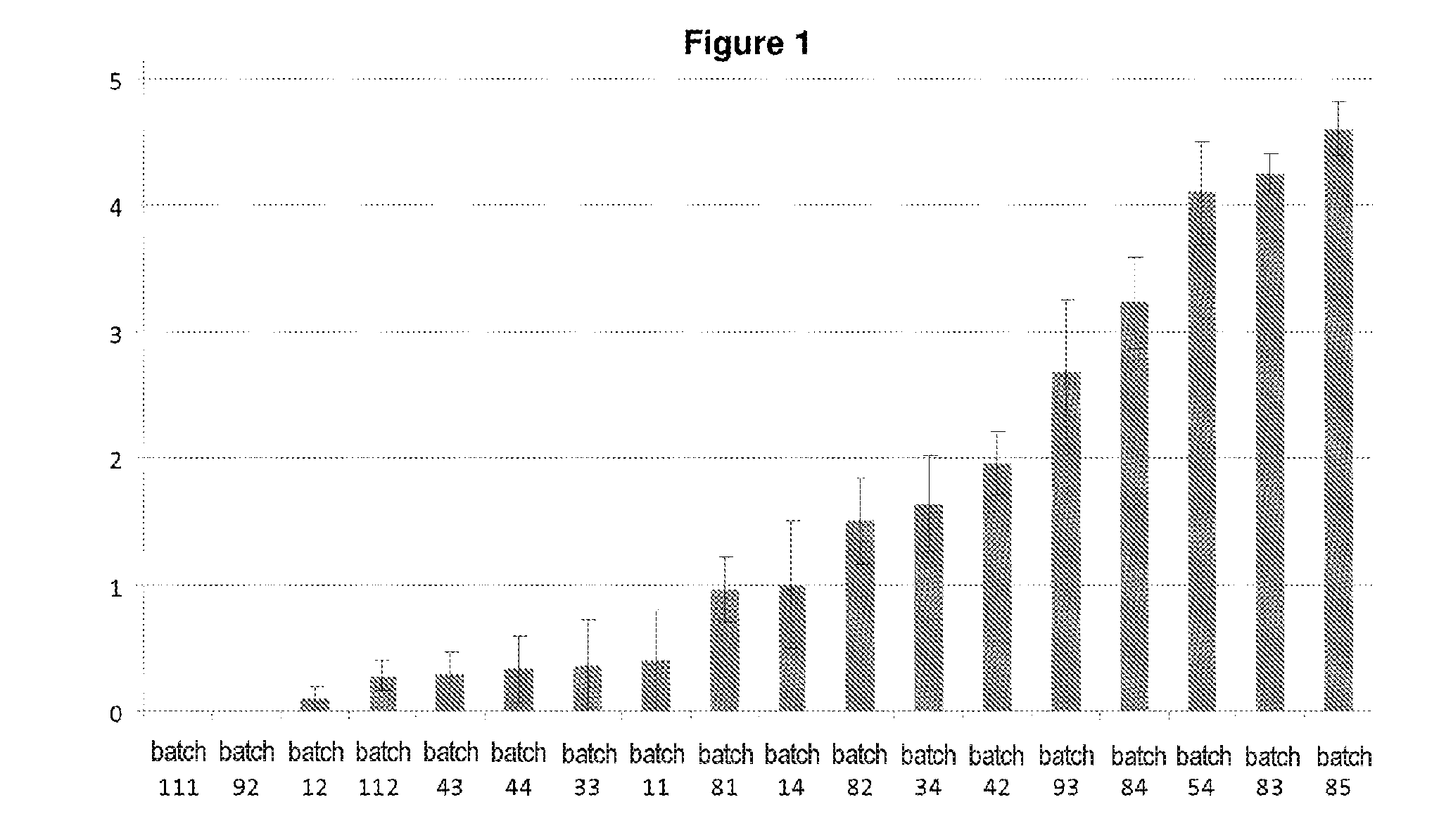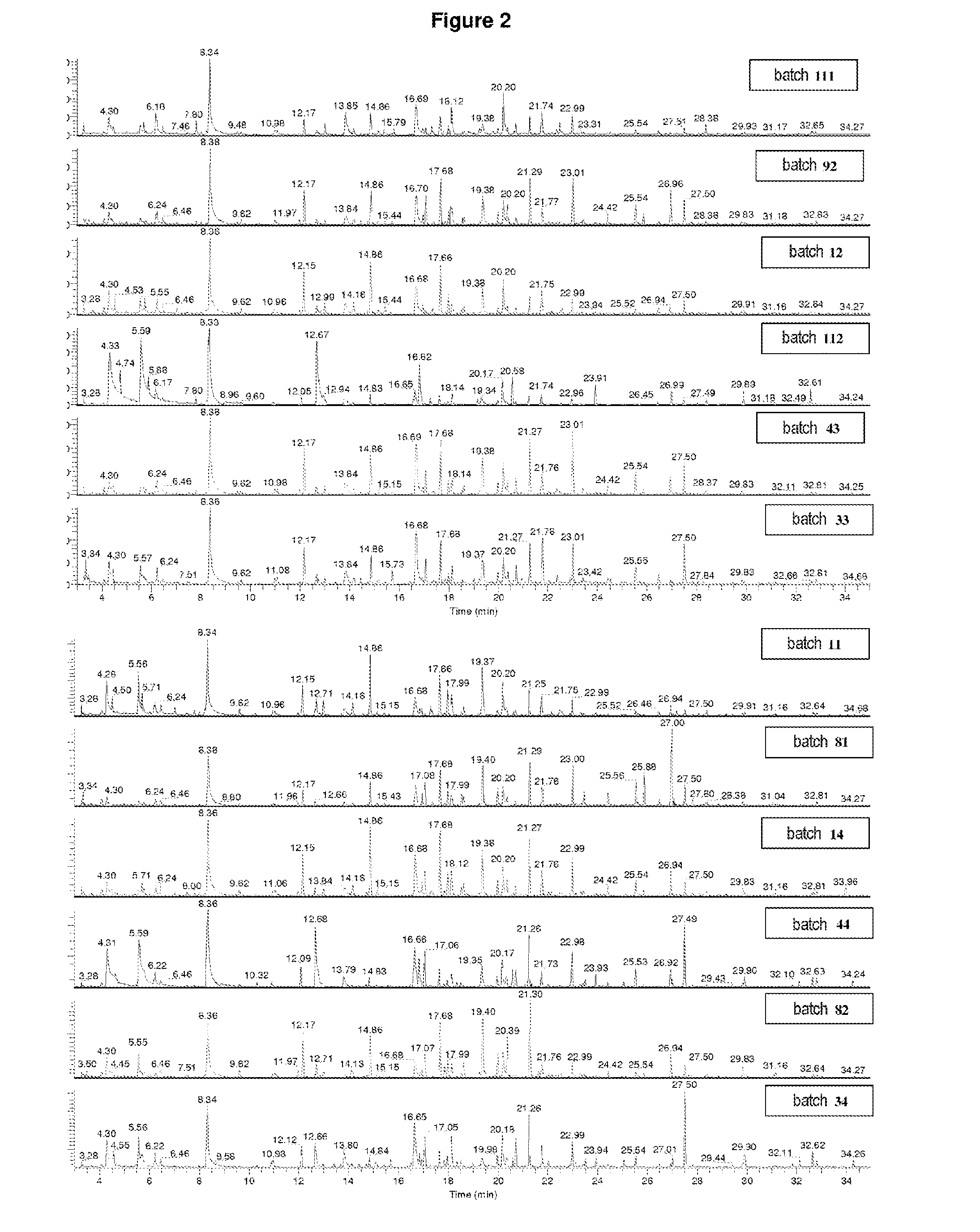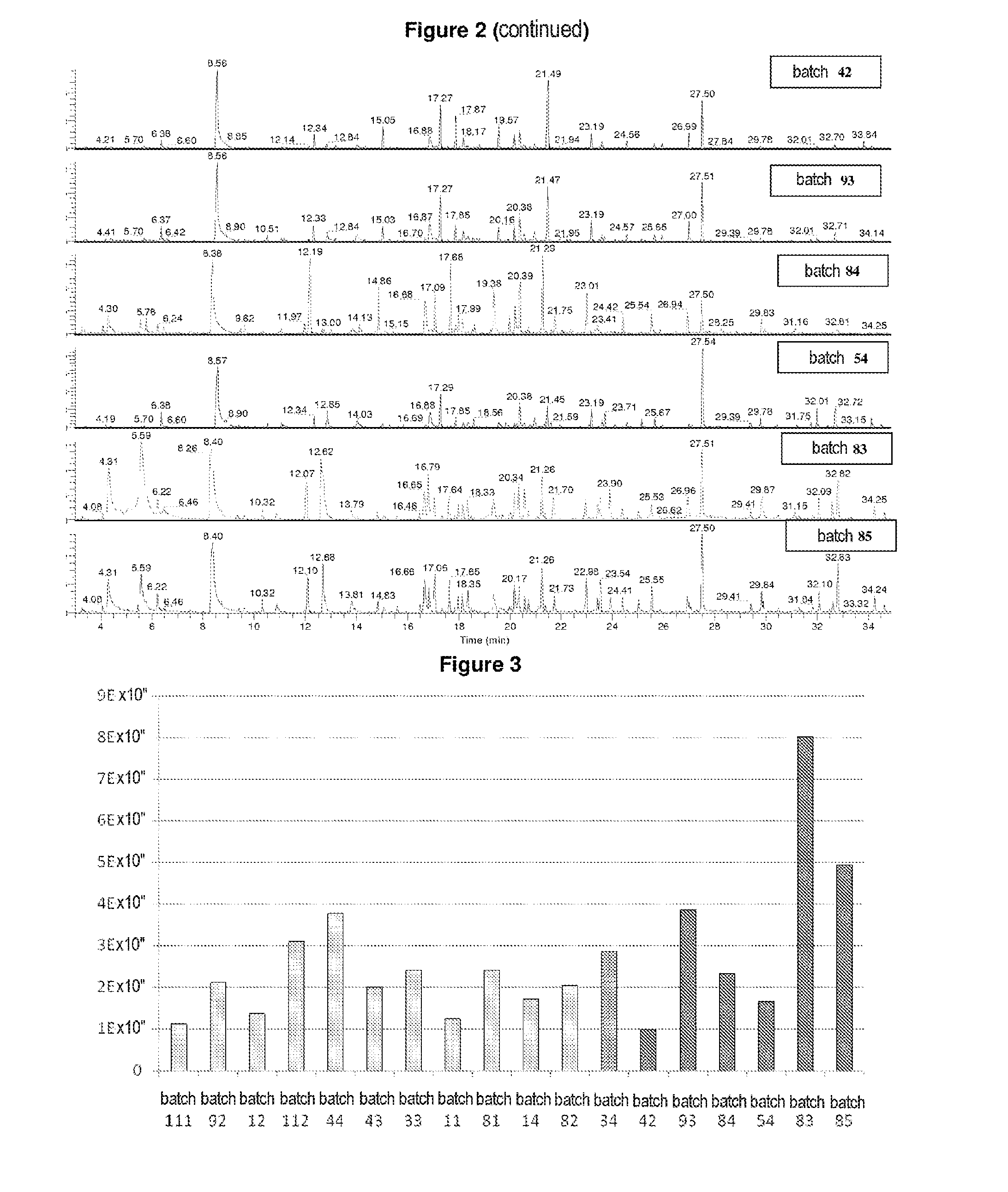Protein-rich microalgal biomass compositions of optimized sensory quality
a technology of microalgal biomass and optimized sensory quality, which is applied in the direction of library member identification, testing food, instruments, etc., can solve the problems of inability to meet the needs of users, etc., to achieve the effect of enhancing flavor valu
- Summary
- Abstract
- Description
- Claims
- Application Information
AI Technical Summary
Benefits of technology
Problems solved by technology
Method used
Image
Examples
example 1
Definition of the Sensory Test
[0120]The perception of the protein-rich microalgal biomass composition is determined by solubilization in water, the neutral medium par excellence.
[0121]A sensory panel was therefore formed to evaluate, according to the methodology set out above, the sensory properties of various batches of biomass of protein-rich microalgale, prepared according to the teaching of patent application WO 2010 / 045368.
[0122]18 batches of microalgal biomass were tested: batch 11, batch 12, batch 14, batch 33, batch 34, batch 42, batch 43, batch 44, batch 54, batch 81, batch 82, batch 83, batch 84, batch 85, batch 92, batch 93, batch 111, batch 112.
[0123]The result of such characterization of the batches is given based on the highly characteristic descriptor of the odor of “paint”.
[0124]Data Processing:
[0125]The analyses were carried out using the R software (freely sold):
[0126]R version 2.14.1 Dec. 22, 2011
[0127]Copyright (C) 2011 The R Foundation for Statistical Computing
[...
example 2
Identification of the Volatile Organic Compounds (VOCs), by SPME / GC-MS, Associated with Unacceptable “Paint Odor” Organoleptic Classifications
[0142]In order to carry out the SPME / GC-MS analysis of the 18 various batches of microalgal biomass compositions, the process is carried out as indicated above in aqueous suspension.
[0143]Analysis of the Volatile Compounds on Products in Aqueous Suspension
[0144]The volatile compounds were analysed in aqueous suspension in order to reduce the matrix effect, and an internal standard was added.
[0145]Visually, as shown in FIG. 2, the GC-MS chromatograms remain very complex, with a very high number of compounds.
[0146]The first approach consists in comparing the chromatographic profiles, in integrating all the peaks between 3.2 and 35.0 min (TIC, “total ion current”), and in checking whether these “untreated” results enable a link to be made to the sensory classification.
[0147]The comparison of the chromatographic profiles and the integration of all...
PUM
 Login to View More
Login to View More Abstract
Description
Claims
Application Information
 Login to View More
Login to View More - R&D
- Intellectual Property
- Life Sciences
- Materials
- Tech Scout
- Unparalleled Data Quality
- Higher Quality Content
- 60% Fewer Hallucinations
Browse by: Latest US Patents, China's latest patents, Technical Efficacy Thesaurus, Application Domain, Technology Topic, Popular Technical Reports.
© 2025 PatSnap. All rights reserved.Legal|Privacy policy|Modern Slavery Act Transparency Statement|Sitemap|About US| Contact US: help@patsnap.com



